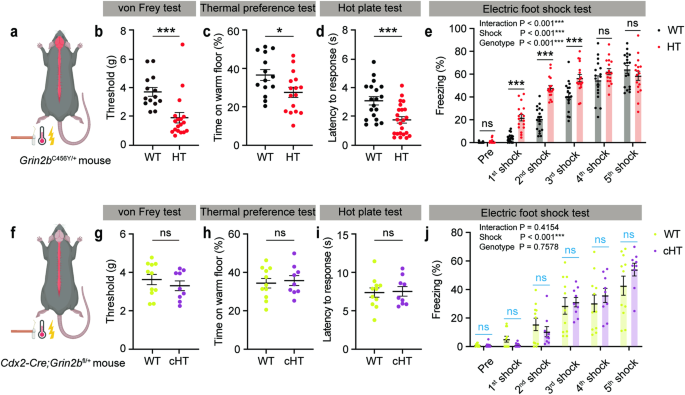2024-05-09 韓国基礎科学研究院(IBS)
<関連情報>
- https://www.ibs.re.kr/cop/bbs/BBSMSTR_000000000738/selectBoardArticle.do
- https://www.nature.com/articles/s41380-024-02572-y
Grin2b変異マウスにおける感覚過敏の背景には、前帯状皮質関連の機能的ハイパーコネクティビティがある Anterior cingulate cortex-related functional hyperconnectivity underlies sensory hypersensitivity in Grin2b-mutant mice
Soowon Lee,Won Beom Jung,Heera Moon,Geun Ho Im,Young Woo Noh,Wangyong Shin,Yong Gyu Kim,Jee Hyun Yi,Seok Jun Hong,Yongwhan Jung,Sunjoo Ahn,Seong-Gi Kim & Eunjoon Kim
Molecular Psychiatry Published:04 May 2024
DOI:https://doi.org/10.1038/s41380-024-02572-y

Abstract
Sensory abnormalities are observed in ~90% of individuals with autism spectrum disorders (ASD), but the underlying mechanisms are poorly understood. GluN2B, an NMDA receptor subunit that regulates long-term depression and circuit refinement during brain development, has been strongly implicated in ASD, but whether GRIN2B mutations lead to sensory abnormalities remains unclear. Here, we report that Grin2b-mutant mice show behavioral sensory hypersensitivity and brain hyperconnectivity associated with the anterior cingulate cortex (ACC). Grin2b-mutant mice with a patient-derived C456Y mutation (Grin2bC456Y/+) show sensory hypersensitivity to mechanical, thermal, and electrical stimuli through supraspinal mechanisms. c-fos and functional magnetic resonance imaging indicate that the ACC is hyperactive and hyperconnected with other brain regions under baseline and stimulation conditions. ACC pyramidal neurons show increased excitatory synaptic transmission. Chemogenetic inhibition of ACC pyramidal neurons normalizes ACC hyperconnectivity and sensory hypersensitivity. These results suggest that GluN2B critically regulates ASD-related cortical connectivity and sensory brain functions.


